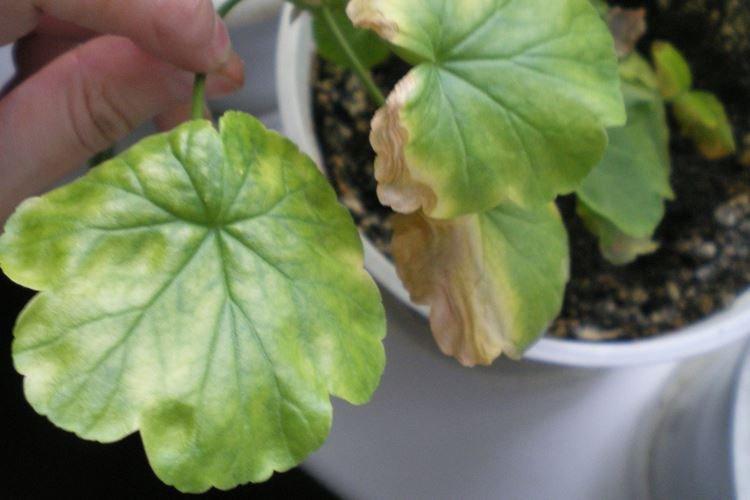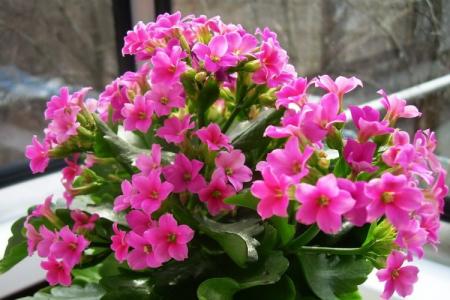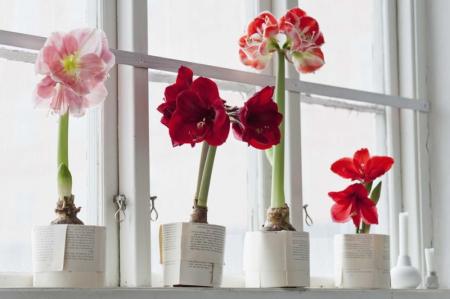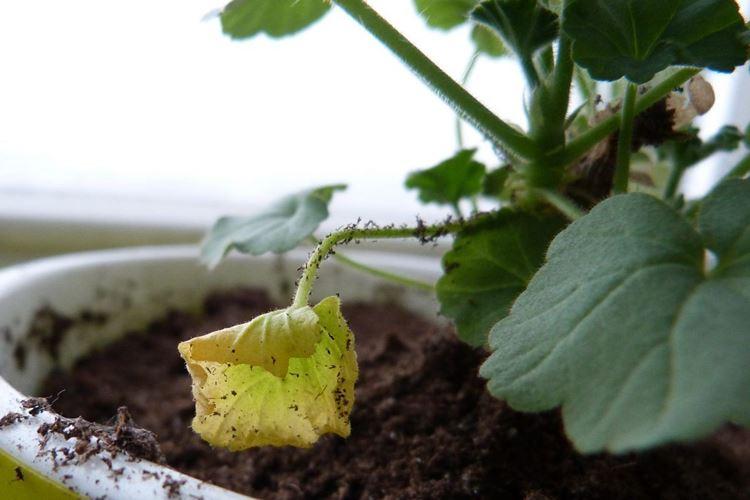
Geranium is loved for its unpretentiousness combined with bright beauty. But even with the most undemanding plants, problems arise, as with any living organism. Geranium leaves can turn yellow, dry and curl. We will tell you why this happens and what measures to take!
Watering
Too rare or excessive watering leads to the same consequence: the geranium gradually dies. When there is too much moisture, the leaves turn yellow and soften, and rot and fungus develop over time. And from dryness, the plates do not soften, but, on the contrary, dry out from the edges.
When overflowing, let the substrate dry out, and in neglected situations, transplant the geranium into a new flowerpot with new loose soil. In the second case, resume watering in normal mode, and soon the flower will return to normal.
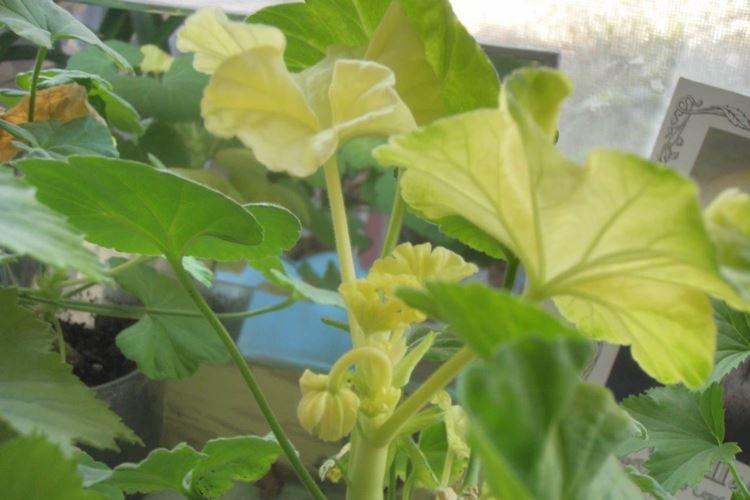
Poor drainage
Geranium does not tolerate swampy soil, and this applies not only to the room, but also to the garden. Be sure to need good drainage and a fairly loose soil that allows air to pass through. When this is not the case, geranium not only turns yellow, but also blooms poorly.
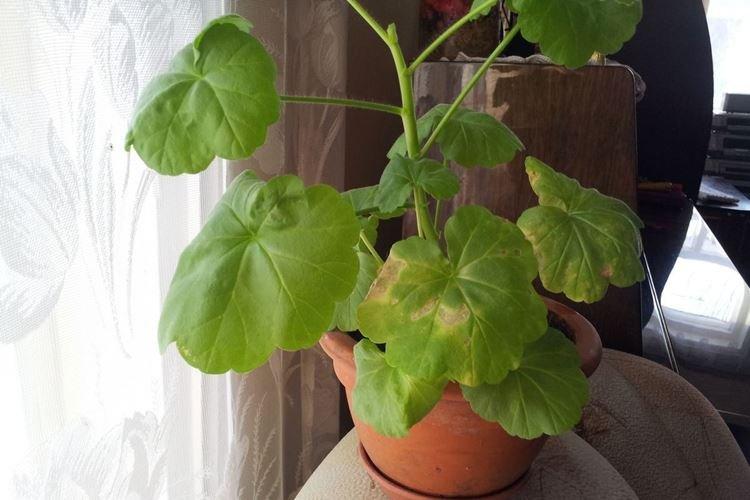
Excess nitrogen
All plants need nitrogen to build up green mass and form a neat bush, which geraniums are good for. But if there is too much nitrogen, the geranium also gradually turns yellow. The easiest way is to transplant a flower, or at least rinse the soil with running water.
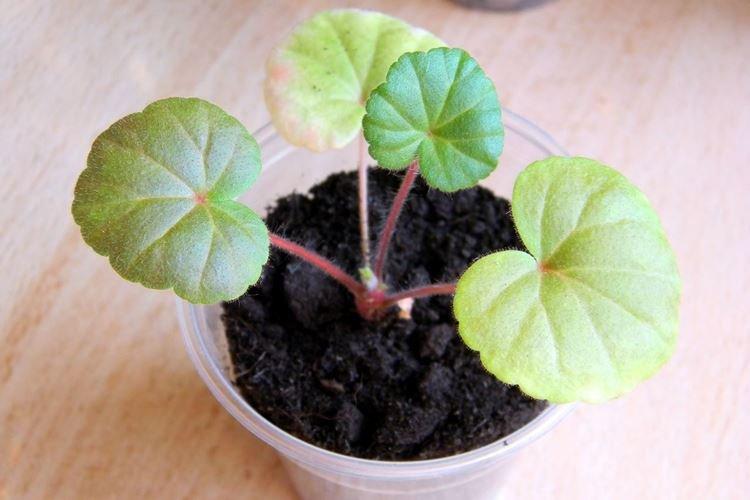
Lack of space
This problem is typical for indoor seedlings that live in flowerpots. It grows rather quickly, and it certainly needs a pot in size. In a cramped container, the roots do not receive the normal amount of nutrients, which is why the leaves of the geranium begin to turn yellow.
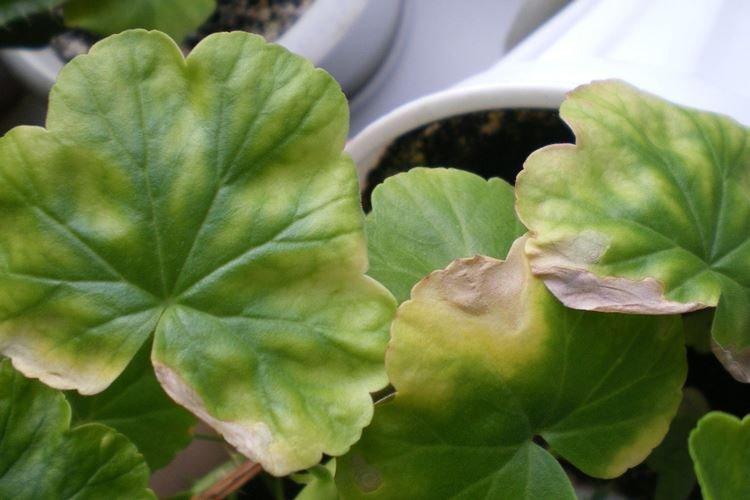
Improper wintering
If you bring geranium into the room for the winter, it is very important to provide it with the right conditions. Do not put pots near the radiator and avoid high temperatures in general. Be sure to take care of protection from drafts and do not overflow the flower, otherwise the leaves will turn yellow and fall off.
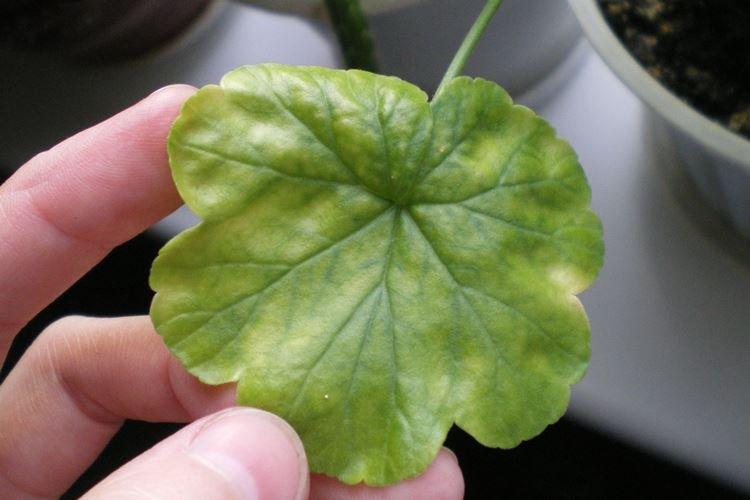
Fungus
If geranium leaves turn yellow in round spots, which darken over time and pass to the stems, it looks like a fungus. There are different types of fungal diseases, but the treatment is always the same. Remove the damaged fragments, sprinkle all the sections with charcoal, treat the geranium with fungicides and adjust the irrigation regime.
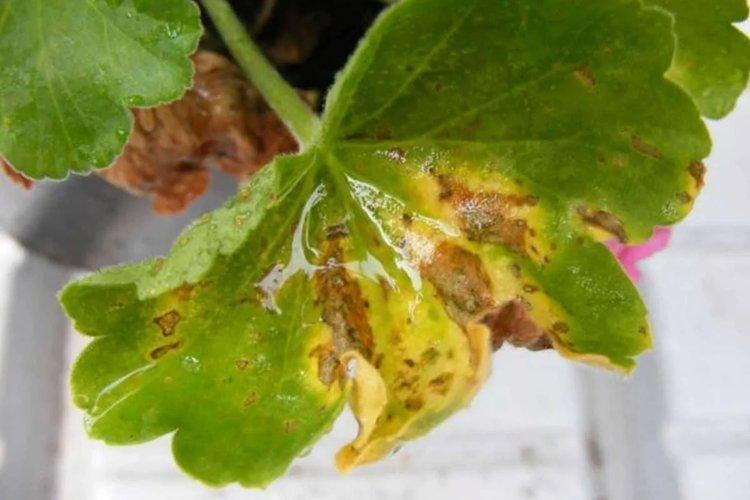
Withering
Verticillium wilt is a viral disease that can affect geraniums. Because of it, the leaves turn yellow, but at first the yellowness appears on the lower part, and not, as always, from the edges. Gradually, it spreads to the entire leaf, and then goes to the stem, until the plant dies completely.
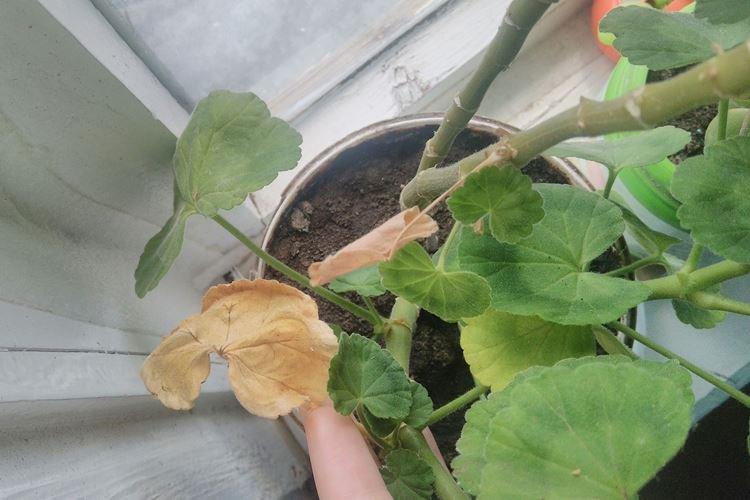
Pests and parasites
Geranium leaves can turn yellow due to parasites or insects, and it is important to correctly consider other symptoms. For example, aphid leaves a sticky bloom, brown bumps leave scabbards, and a mite leaves a whitish cobweb.
Whiteflies and caterpillars eat leaves and suck out nutrients from them, which is also fraught with yellowness. In any case, the flowers need to be treated with insecticides as soon as possible, and in the future - not to neglect the planned treatment of pests.
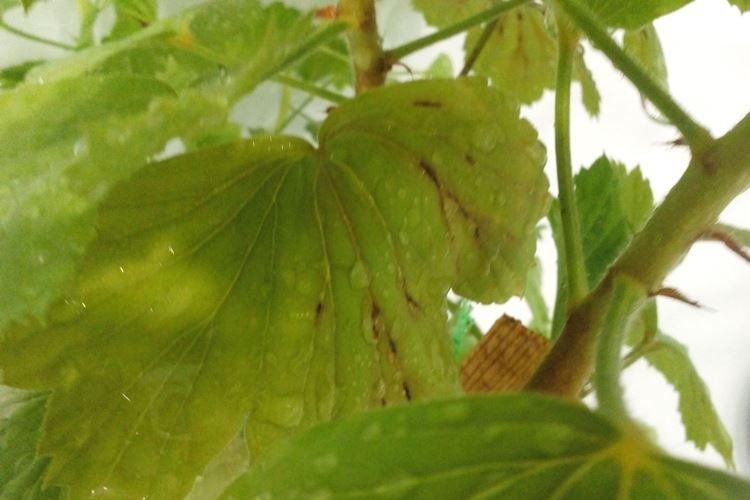
Geranium leaves turn yellow at the edges
Most often, geranium leaves turn yellow at the edges due to improper care. If the natural yellowness associated with aging starts from the bottom up, then the leaves are desired from the crown. Adjust the watering regime, check the temperature in the room and make sure the flower has enough light.
If the leaves turn yellow in the summer without any other external symptoms, just try to water the geranium more often. And if they react like that to a transfer or moving from street to room, it's just stress. Give the geranium a little time to acclimate and it will recover on its own.
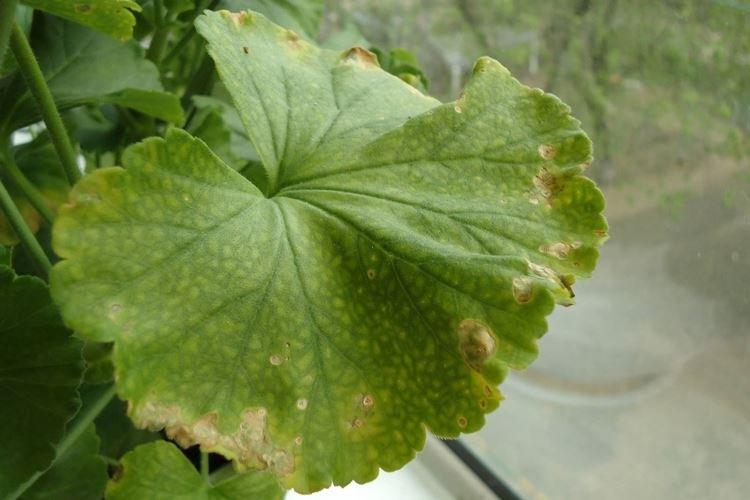
Geranium leaves turn yellow spots
If geranium leaves turn yellow in irregular spots, this most often indicates an infection or virus. Usually, over time, such plates turn brown and die off, and the whole process is accompanied by other symptoms. For treatment, fungicides or special antibiotics are used.
The most dangerous enemy is a viral mosaic that cannot be eliminated. If yellow spots add up to a bizarre mosaic pattern - most likely, it is in her. Then the geranium must be immediately isolated and destroyed as soon as possible, before the disease spreads to neighboring flowers.
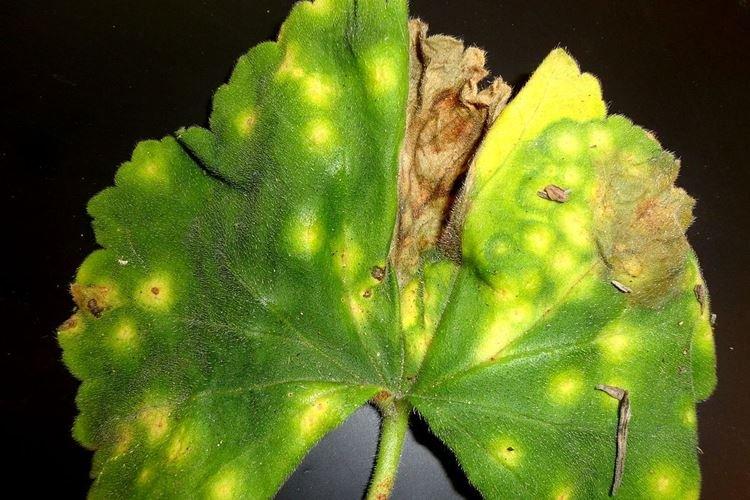
What to do to prevent geranium leaves from turning yellow?
Choose the right place for planting, watch out for lighting and the absence of drafts. Adjust the irrigation regime, control the dryness of the topsoil and apply fertilizers on time according to the schedule.
Indoor geraniums should grow in a pot in size, and for the winter they need coolness. Check flowers regularly for symptoms of diseases and pests so you can take action in time!
